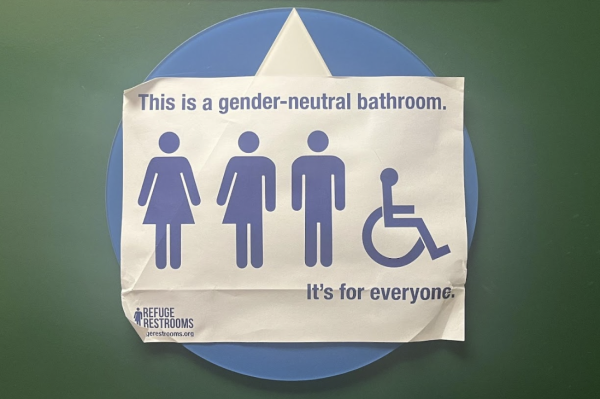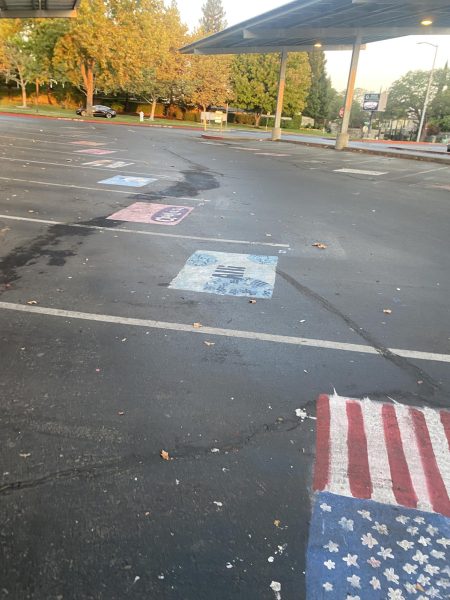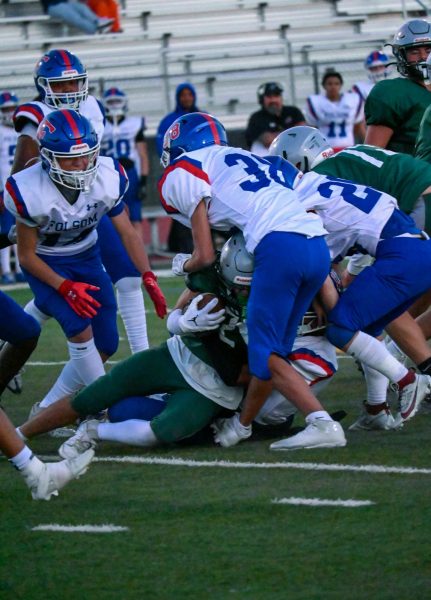Board agrees to offer charter oversight
Many teachers and district administrators opposed to school district being linked to John Adams Academy
Gazette/GBT.org iIllustration/ KATE FERNANDEZ
Despite a recommendation against approval by school district leadership, the Roseville Joint Union High School District board of trustees approved a petition to offer oversight to John Adams Academy, a charter school in Roseville.
In late May, the Roseville Joint Union High School District board voted 4-1 in favor of approving a petition submitted by local charter school John Adams Academy, which will make the high school district responsible for the Academy’s oversight.
The petition also changed the school’s official name to John Adams Academy-Roseville.
Previously, the school was under the oversight of the Loomis Union School District. In late February, Assembly Bill 1507 began making its way through the California legislature. The bill, which requires charter schools to be approved by their local school district, prompted the school to take early action and petition RJUHSD for oversight.
“RJUHSD has the responsibility of oversight for JAA, but JAA is independent,” board member Paige Stauss said.
However, the RJUHSD was not the only district available for oversight.
“(The school) could have been authorized by either RJUHSD or Roseville City School District, as the school is physically located within both district’s geographic boundaries,” said Norman Gonzales, the Academy’s director of outreach, in an email. “It made the most sense to submit a petition to RJUHSD because (it) serves high school scholars and has consistently been one of the top performing high schools in the region.”
Others said the Academy’s ties to the high school district, and specifically to Granite Bay High, might have played a part in the Academy decision to pursue oversight by the RJUHSD.
“There are a lot of ties to our community,” GBHS principal Jennifer Leighton said. “For instance, the creator of the school had kids that attended GBHS.”
The John Adams Academy was founded in 2010 by Dean Forman, a former RJUHSD board member. The original Roseville campus opened in 2011, and Academy campuses in Lincoln and El Dorado Hills opened in 2017.
The GBHS-Forman connection hasn’t always been positive. History teacher Mike Valentine said the tension between Forman and GBHS goes back a long way.
“We’ve had a history between (Forman) and the school district – myself included,” said Valentine, who has taught Advanced Placement European history for 15 years at GBHS. “He was a member of our school board. And let’s say he called me out the day after he won the election, for ‘showing too many videos in class.’ ”
Valentine isn’t alone in his concerns about the Academy and its connection to the school district.
“Our staff at the district office level was unanimous that this is not a good idea,” said Brandon Dell’Orto, a history teacher at GBHS and the president of the Roseville Secondary Education Association that represents teachers in contract negotiations. “And the board overrode that.
“When you’ve been given the job of running the district by elected officials who are not experts in education – very smart people, very passionate people, but they’re still not experts in running a school district – and the people you pay to run the district say unanimously, ‘This is probably not a good fit for us,’ and the board says, ‘No, we don’t agree, we think we’re going to go ahead and go with it’ – that’s going to have repercussions long term, both on the teachers and the board and the staff.”
District superintendent Denise Herrmann said she stands by the district staff’s recommendation to not offer oversight to the John Adams Academy.
“The administrative recommendation to not approve the charter application was a compilation of work completed by nearly a dozen people working hundreds of hours, over an eight week time frame,” Herrmann said in an email. “I am extremely proud of the quality of the work and stand by its outcome.”
Academy officials and parents, meanwhile, are supportive of the decision.
“The Board of RJUHSD is not only elected by people who attend or work in an RJUHSD school, but by all residents who live within the district,” Gonzales said. “As such, they represent the interest of all students and families that live within the boundaries of RJUHSD no matter what school they attend.
“The Board was thoughtful and fair in their review of our petition and in their representation of the best interest of RJUHSD, including all of those families within their district that desire the freedom to choose additional educational options for their children.”
Julie Hirota, the president of the school board, stands by her decision to support district oversight of the Academy.
“I based my decision solely on the law governing charter approval,” Hirota said in an email. “The issues raised by administration in their recommendation were and are legitimate, however, those issues can be addressed as part of the oversight that the district will perform.”
In an email, Forman, the Academy’s founder, said: “John Adams is a unique new choice for Roseville and complementary to the broad array of educational options already offered at the district. Giving parents and scholars choice makes a great district even better.”
“It is likely Roseville will continue to attract future colleges, families and businesses with this type of visionary leadership.”
Dell’Orto remains unconvinced.
“Our belief is that our board of education should exclusively worry about the kids that are in their responsibility, and that we’re going into uncharted waters if we’re going to now take on the responsibility of monitoring some other group that we really don’t have a relationship with,” he said. “And that includes the financial control of the district and making sure that we don’t go into a relationship that might cost us money that could be diverted from our kids to their kids because of that responsibility.”
Stauss, the only board member to vote against the petition, said in an email: “I was concerned with many issues, but first and foremost, I asked myself was accepting this charter good for the RJUHSD? In my analysis, I came to the conclusion that it was not.”
In the School Accountability Report Card for the Academy’s 2017-2018 school year, only 48% of students met or exceeded the state standard for English Language Arts compared to 72% of students in the RJUHSD. In math, however, 50% of Academy students met or exceeded the state standard, compared to the school district’s 49%.
Valentine noted that the Academy’s science curriculum “would not be the same as ours, which is why (Forman) ran for the board back in 2000. He didn’t like what was being printed on school newspapers or anything else or what’s being taught in the science side. You take that for what it’s worth.”
Stauss said she was also concerned about a high school district having oversight of a K-12 school. Because the RJUHSD is not currently equipped to oversee K-8 curriculum, the district will need to either hire experts from outside of the district or train people to evaluate the Academy’s curriculum.
Finally, Stauss said the Placer County Office of Education would have stepped in to provide oversight, and that would have been a better fit.
Another common concern among district staff is the cost of oversight.
“The oversight impacts RJUHSD financially – we can only charge (the Academy) 1% for our oversight services which, in my opinion, will not cover our expenses,” Stauss said. “The 1% is from JAA’s total operating budget that they receive from the state.”
Despite talk of possibly “making money” off of the Academy, critics say it’s unlikely that will be a reality if district officials do their job.
“Part of the worry is that we might have gotten ourselves stuck into something that would be more expensive and labor intensive than people thought it would be,” Dell’Orto said.
Hirota said there is a misconception about charter schools.
“Many believe that by approving a charter petition, the district will have large-scale resources diverted to the charter school,” Hirota said. “However, this is not accurate. (The Academy) operates as a stand-alone school, and there will be no noticeable difference to students or teachers in the district.”
Herrmann said the district’s officials will strive to make the new relationship work.
“Students and staff should not expect any noticeable differences,” Herrmann said. “The greatest impact will be to district administrative staff who will play an active role in the oversight of finances, enrollment, and teaching and learning.”
While some district teachers and staff are unhappy about the new relationship with the Academy, “the staff, administration, faculty and families of (the Academy) are excited and enthusiastic about the RJUHSD Board decision to approve the charter petition,” Gonzales said. “We are also very optimistic regarding the new relationship and the opportunity to collaborate to make both programs the best that they can be for the benefit of students.”
For many RJUHSD teachers and staff, the vote to approve the relationship was the greatest surprise.
“The vast majority of us were dead set against it when the vote happened last spring,” Valentine said. “It caught our district administration completely off guard. They thought that this thing would be voted down by the board and instead it was a 4-1 vote and they didn’t have any answers.
“How much is it going to cost? What’s going to happen now? We’re still like, ‘What’s going to happen?’
“And we don’t know.”












![A group photo of all students who came to STN at the first Cinefest of STN were they showed films that other schools did for some of the competitions.
"[my favorite moment was] crazy 8 or cinefest or socializing." Elliana Montez a freshman at GBHS](https://granitebaytoday.org/wp-content/uploads/2025/03/CgHlLzxuCLXTL8GUeOFSXTK2JFtSMxUFrH6bnLcM-600x450.jpg)




